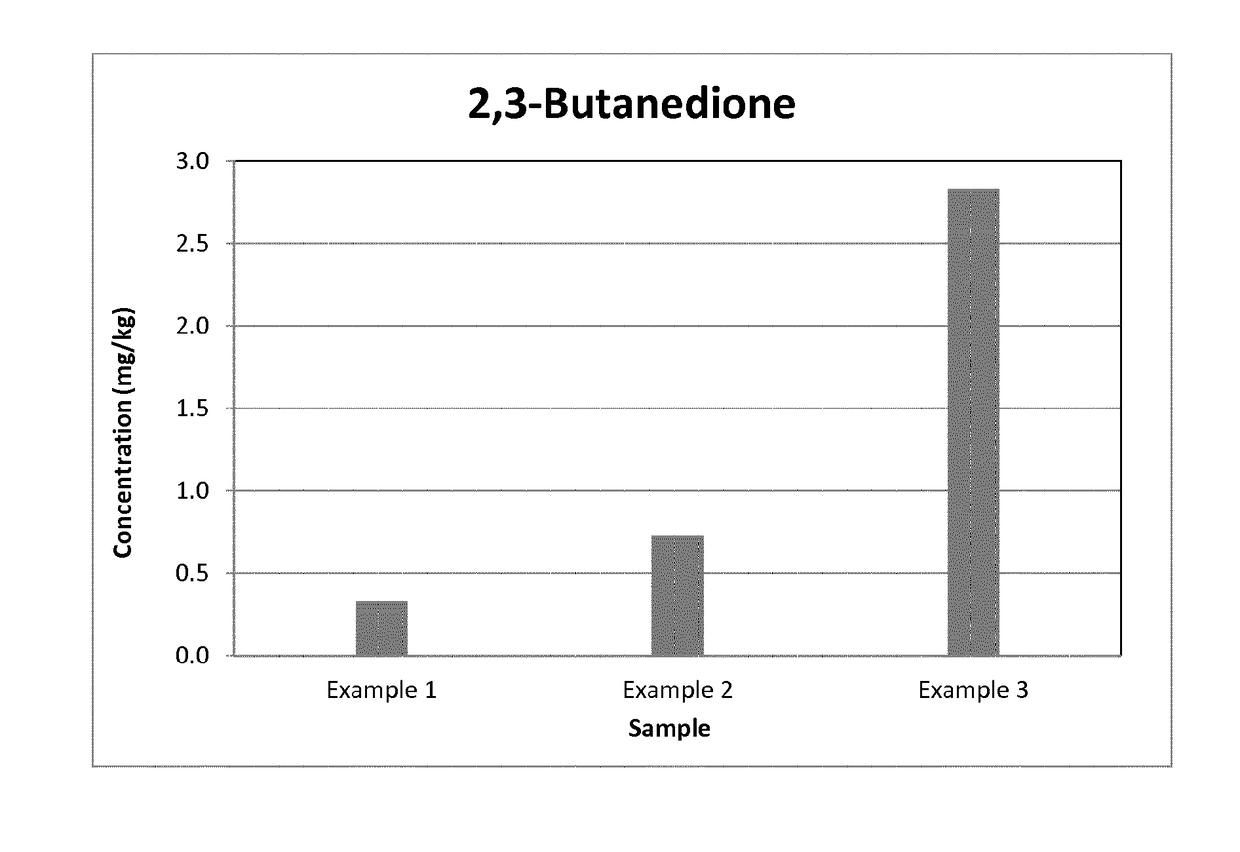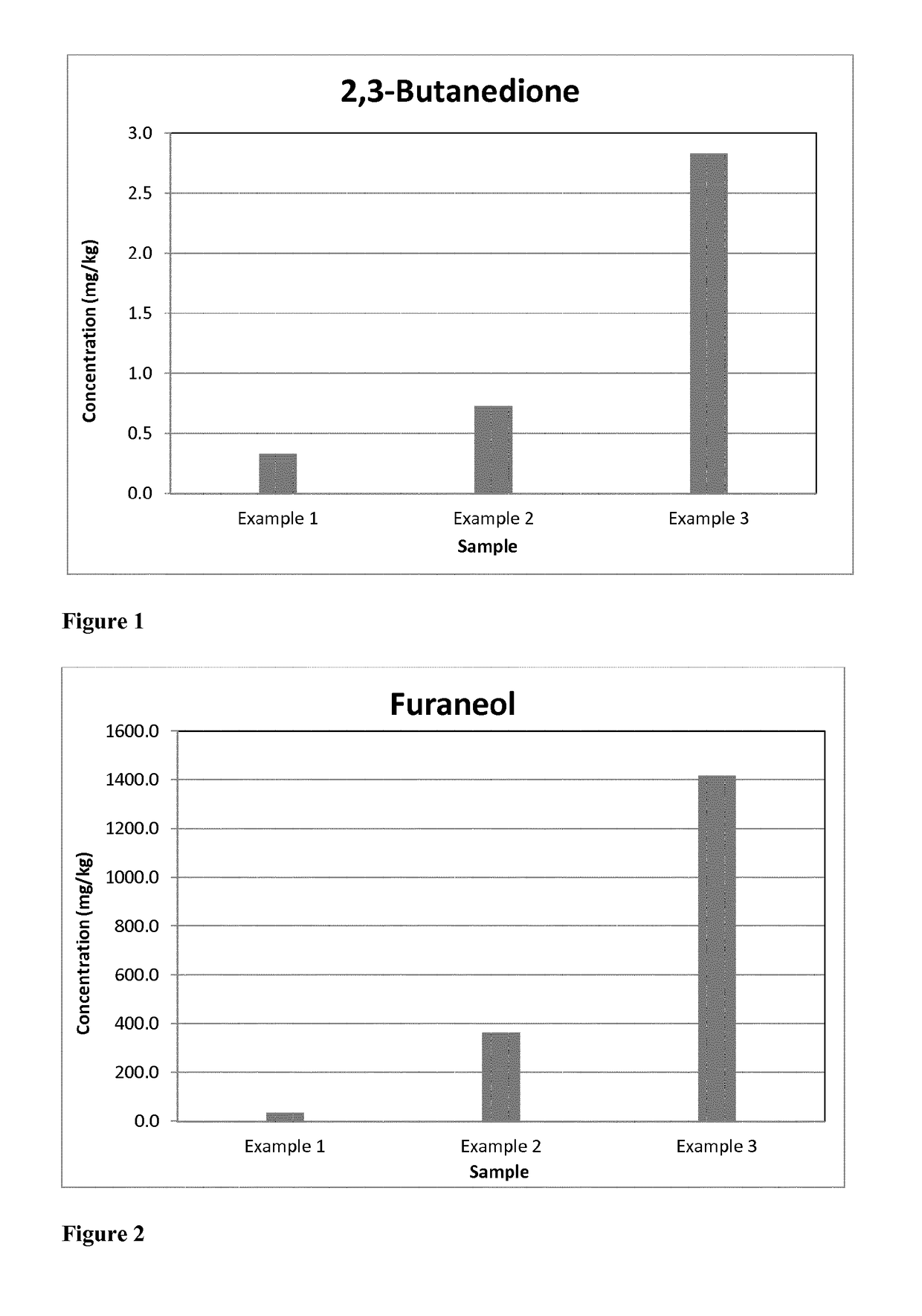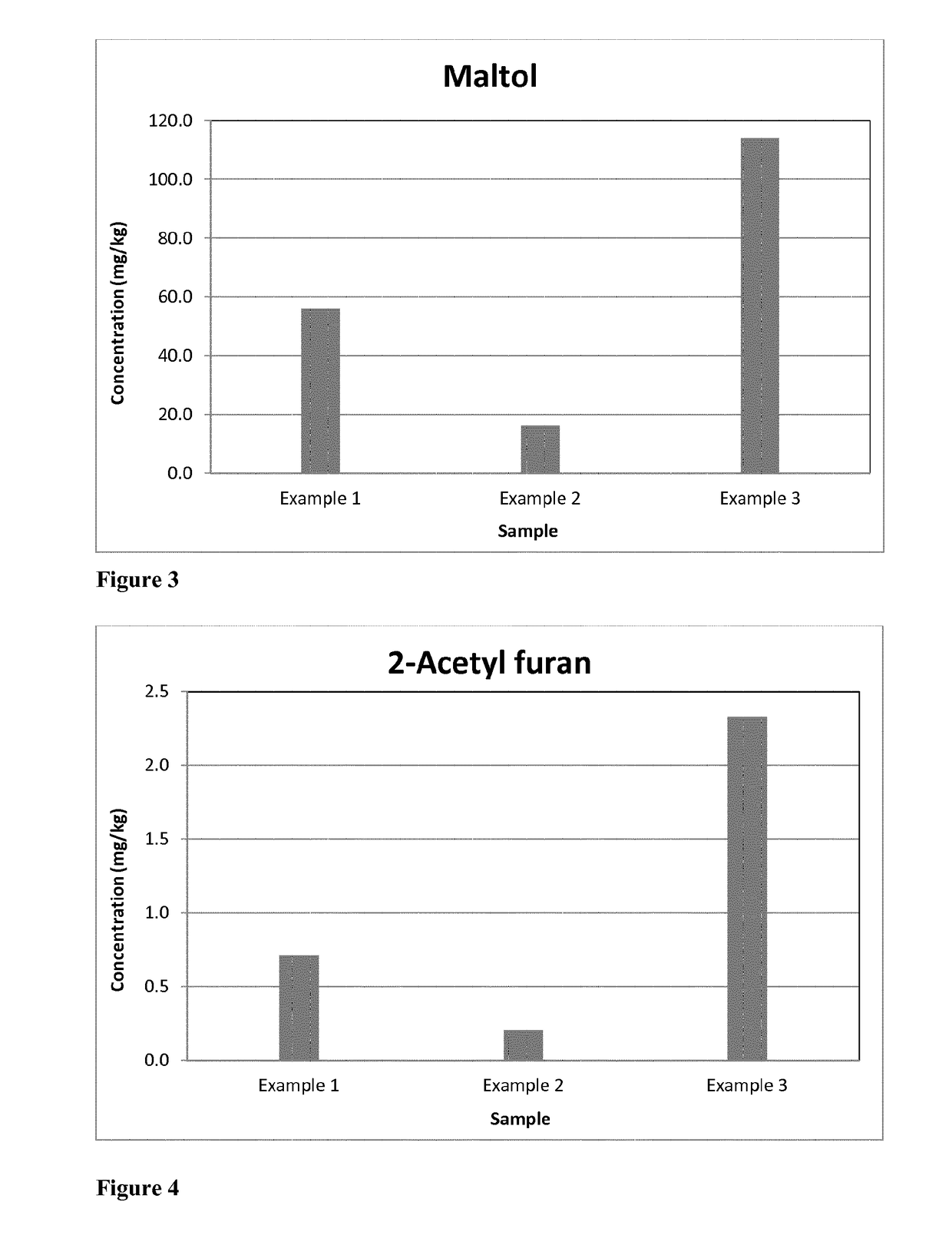Fat-based flavour concentrates and process for producing same
a technology of flavour concentrate and fat, which is applied in the direction of food ingredient as flavour affecting agent, application, and food ingredient as emulsifier, can solve the problems of not being able to achieve all or several of the above described flavour characteristics, use of state-of-the-art flavour concentrate developed for confectionary, and only very limited value of coffee based beverages. achieve the effect of enhancing body, mouthfeel, and maintaining roasty character of beverages
- Summary
- Abstract
- Description
- Claims
- Application Information
AI Technical Summary
Benefits of technology
Problems solved by technology
Method used
Image
Examples
example 1
Preparation of Dulce De Leche Flavour Concentrate (Comparative Example 1)
[0060]In close accordance to example 1 of EP1411778, a dulce-de-leche type of flavour concentrate was prepared by melting hydrogenated palm kernel oil at 75° C. (product temperature) and subsequent mixing with the dry ingredients listed in Table 1 using an agitated pressure cooker (Stephan mixer). The ingredient mix was then heated to 120° C. (within 5-10 min.) and held for 10 minutes using a steam-jacketed Stephan mixer equipped with high speed stirrer (Note that holding time of 10 min was chosen to be directly comparable to the flavour concentrates obtained in this invention). The finished dulce de leche fat-based flavour concentrate was then cooled to 70° C. prior to incorporation into the wet mix of a creamer base (see Example 7).
TABLE 1Composition (%) of ingredients for the preparationof the dulce-de-leche flavour concentrateIngredients% raw material (dry)Sugar44.47Hydrogenated palm kernel oil35.00Skimmed ...
example 2
Preparation of Nestle Flavour Concentrate (Comparative Example 2)
[0061]In close accordance to example 1 of EP1383397, a flavour concentrate was prepared by melting hydrogenated palm kernel oil at 75° C. (product temperature) and subsequent mixing with lecithin as well as with the dry rhamnose, proline and disodium phosphate in amounts shown in Table 2 (Note that recipe and process conditions of EP1383397 were chosen to be directly comparable to the flavour concentrate obtained in this invention as well as to EP1661465). Using a steam-jacketed Stephan mixer equipped with high speed stirrer, the ingredient mix in oil was then heated to 115° C. (within 5-10 min.) and held for 10 minutes. The finished biscuit-popcorn smelling fat-based flavour concentrate was then cooled to 70° C. prior to incorporation into the wet mix of a creamer base (see Example 7).
TABLE 2Composition (%) of ingredients for the preparationof the Nestlè flavour concentrateIngredients% raw material (dry)Hydrogenated p...
example 3
Preparation of a Novel Flavour Concentrate A for Beverages
[0062]A novel flavour concentrate type A was prepared by melting hydrogenated palm kernel oil at 75° C. (product temperature) and subsequent mixing with lecithin. Then, the dry ingredients shown in Table 3 were suspended into the oil, in a first step the skim milk powder, and in a second step the premix of all other precursor materials. Using a steam-jacketed Stephan mixer equipped with high speed stirrer, the ingredient mix in oil was then heated to 115° C. (within 5-10 min) and held for 10 minutes. The finished caramel-biscuit smelling fat-based flavour concentrate was then cooled to 70° C. prior to incorporation into the wet mix of a creamer base (see Example 7).
TABLE 3Composition (%) of ingredients for the preparationof the flavour concentrate A of this inventionIngredients% raw material (dry)Hydrogenated palm kernel oil50.00Skimmed milk powder44.6Lysine HCl2.28Proline1.44Rhamnose0.95Lecithin0.475Disodium phosphate0.28
PUM
 Login to View More
Login to View More Abstract
Description
Claims
Application Information
 Login to View More
Login to View More - R&D
- Intellectual Property
- Life Sciences
- Materials
- Tech Scout
- Unparalleled Data Quality
- Higher Quality Content
- 60% Fewer Hallucinations
Browse by: Latest US Patents, China's latest patents, Technical Efficacy Thesaurus, Application Domain, Technology Topic, Popular Technical Reports.
© 2025 PatSnap. All rights reserved.Legal|Privacy policy|Modern Slavery Act Transparency Statement|Sitemap|About US| Contact US: help@patsnap.com



